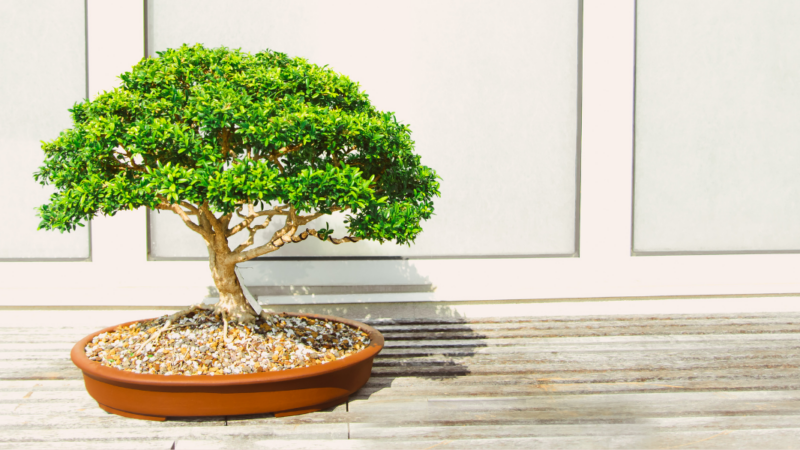Relationship as spiritual practice
My husband and I recently attended a talk that Bruce Tift gave at the Shambhala Center in Boulder titled Relationship as a Path of Awakening. Bruce Tift, LMFT, is a private-practice therapist and instructor at Naropa University here in Boulder. (In the interest of full disclosure, I must say that Bruce is also a Sounds True author with an amazing audio program titled Already Free.) In his talk, Bruce discussed at length the both magical and disturbing nature of intimate relationships and how important it is to continually nurture and accept one another, while simultaneously and unabashedly encouraging growth. He highlighted common relationship patterns that he often sees in his private practice and helped trace them back to childhood—namely survival skills that we established upon first connection with our mothers, which no longer serve us. It should be noted that Bruce was not talking about survival skills which could be considered obvious reactions to abuse or neglect from a parent. Instead, he was referring to seemingly innocent details, such as our mothers’ own self-confidence, and how those nuances come to fruition in our adult lives and inform how we ultimately view the world, connect in intimate relationships, parent our children, etc. For me, discovering how much our lives are perpetually infused by even the minutest aspects of intimate relationship was both a beautiful and terrifying realization. How can we ever be fully aware of the implications of our behavior?
In his talk, Bruce also emphasized the need for couples to develop what he calls “healthy intimacy,” which involves building a strong connection, while at the same time fostering a sense of healthy separation. In Bruce’s opinion, the juxtaposition of connection and separation encourages couples to build a sense of individual independence and to shed their own self-limiting behaviors, while also fostering a depth of adoration and understanding for one another and their collective experience. What most resonated for me in Bruce’s talk is that individual development is only as effective as collective development—for in intimate relationship, the two are ultimately one. No matter how much progress we may make individually, if we’re not progressing in step with one another, our collective experience will be perpetually fractured. While this has always been obvious to me when it comes to goals and alignment related to our outer life—finances, health, travel, family, etc.—I’ve never viewed our inner spiritual goals as those that require the most attention and ultimately make our relationship work.

As relative newlyweds, my husband and I are continually exploring relationship and the role that intimate relationships in particular play in one’s practice or personal growth. While people typically rely on those closest for nurturing and support, it is also those close to us who are best equipped to cast light on all our shadows. But how do we strike the balance between building the nest and deconstructing old patterns? How can we encourage one another to be vulnerable and to break our hearts wide open in relationship, while simultaneously using that same openness to examine and cast each others’ skeletons out of the closet? How do we prevent the very delicateness that we create within intimacy from also being used against us? In Bruce’s words, how do we negotiate the hard fact that our most beautiful and unconditional relationships can also be the most disturbing?
Share Good Karma – free gifts from Sounds True!
Dear friends, we wanted to let you know about a new program at Sounds True, called Share Good Karma, which was created so that you could receive free gifts from us – and share them with your friends.
The first two titles featured in the program are a collection of relaxing and healing music, entitled Meditation Music: An Invitation to Still the Mind and Open the Heart; and The Practice of Mindfulness: 6 Guided Practices. Once three of your friends “accept” these free gifts from you, you’ll receive an additional free gift of your choice.
Learn more and get signed up for Share Good Karma!

Bigger Isn’t Always Better (and Other Cultural Myths)
Some of our beliefs aren’t even ours. Like old wives’ tales passed down through generations or reflected back to us through society, we inherited certain cultural and familial narratives, adopted them, and left them unquestioned as “Truth.” Sometimes these inherited narratives and beliefs manifest as unquestioned traditions. For example, when making the Thanksgiving turkey, my friend’s mother always cut the breast of the bird off and roasted it separately. This process was embedded in my friend’s view of “how to cook a turkey.” When she moved to New York and began hosting her own Thanksgivings, she also sliced the top off the turkey and cooked it separately. Naturally.
One year a guest asked her why she didn’t cook the turkey whole, which got her to thinking. She didn’t actually know why. It’s just the way it had always been done. So she called her mother to ask about the tradition: Why do we cut the tops off our turkeys? Her mother replied that she had always taken the top off because her mother had always taken the top off; it’s just the way she had learned how to cook a turkey. Naturally curious as to where this learned behavior all began, her mother called her mother, my acquaintance’s grandmother, and asked: Why do we cut the tops off our turkeys?
The grandmother, stumped, thought for a long, hard minute. “Oh,” she remembered, “the oven in my very first apartment was too small to fit an entire turkey, so I had to cook it with the top cut off.” Sixty years later, in a city across the country, my acquaintance was still cooking turkeys as a result of an oven that was too small. This is how inherited narrative works.
Here are some of the narratives that I inherited over the years, in order from most helpful to least: You can be anything that you want to be. Money isn’t very important. It is what it is, and it can’t be changed. Men prefer pretty over smart. Asking for help means you’re weak and needy. These are the ones that I’ve managed to tease out; I’m sure there are plenty more operating in the background that I can’t see.
Part of developing a wholesome or Beneficial View is identifying the stories that we live by, where they came from, and, perhaps most importantly, whether or not they are helpful on the path of waking up to our worthiness. Shariputra, one of the Buddha’s chief disciples, described Beneficial View as the practice of identifying which of our views spring from beneficial beliefs and which spring from harmful beliefs, and then choosing which to nourish and cultivate. Sometimes this also means looking at the views of the culture that we live in.
A few times every year, I host group coaching programs for a rather large online training institute with a global reach, drawing students from a dozen countries, primarily women of varying ages. These groups offer an encouraging environment in which we can speak openly about our fears and hesitations. Over the past decade, working as a coach has revealed to me just how many of us feel a chronic sense of falling behind and a nagging suspicion that we’re not quite _________ enough. You can fill in the blank here with your own particular flavor of not-enough-ness. Not educated enough, smart enough, good-looking enough, likable enough, thin enough . . . You get the picture. A consistent element of these groups has been a gobsmacking number of women sharing that they view their capabilities as insufficient or lacking. Sometimes this feeling extends to the way that they view themselves as people. It’s said that if one fish washes up on the shore, the scientist will call it what it is: a dead fish. Nothing of note, really. However, if hundreds of fish wash up on the shore, the biologist won’t look to the fish for answers. They’ll test the water that the fish are swimming in. So what’s up with the water that we all seem to be swimming in?
In the Western hemisphere, there is a deeply embedded narrative of scarcity that is nearly invisible. I don’t know about you, but I clearly remember playing the childhood game of musical chairs. It begins as a cheerful romp around the circle, with kids squealing and running to nab a chair once the music stops. As the game progresses, however, the stakes get higher. The chairs begin to disappear. The slowest, smallest, and most accommodating kids get disqualified. And the fastest, most aggressive kids advance amidst the dwindling resource of chairs. Good, clean childhood fun. Also, a wonderful way to implicitly teach kids this prevailing myth of scarcity: There is simply not enough to go around. And you better get yours before someone else takes it.
Author, activist, and fund-raiser Lynne Twist illustrates this phenomenon exquisitely in her book The Soul of Money. She likens the scarcity narrative to a “helmet” of insufficiency that we wear throughout our day that flavors every interaction we have. For example, our first thought when getting up in the morning tends to be I didn’t get enough sleep. As we get ready for the day, we think, I don’t have enough to wear, I don’t have enough time, I don’t have enough room on the subway, I don’t have enough help to get this job done well, There aren’t enough good men or women on Tinder, I don’t have enough energy to meet up with my friends, and then our final thought before falling asleep is I didn’t get enough done. This view of not having enough is truly pervasive. It’s no wonder that the women I’ve worked with consistently communicate that they don’t feel like they can live up to their own, or society’s, expectations.
Even if we try to address the messages we might tell ourselves about what we have and don’t have, we can’t avoid them altogether. I was riding the subway to Brooklyn one day when a father and his daughter, who was all of five or six years old, entered the train and stood toward the center of the car. She was chatting to her dad about her day at school until one of the many subway ads caught her eye. In it, there were two juxtaposed photos of a blonde woman. In one photo, the woman was frowning while holding a lemon in each hand, which were hovering at chest height. In the other, she was holding two grapefruits, also at chest height, but she was grinning. “Dad, why is she happy in that one and sad in that one?” the girl asked, pointing to the ad for breast augmentation. I swear the entire subway car went silent in anticipation of how her father would respond. He awkwardly and skillfully lobbed the question back to his daughter. “Well . . . what do you think?” The girl waited a beat and then answered, “She’s happy there because she has big ones and sad there because she has small ones.”
Clearly she had understood the message this poster was communicating to us all: a message of scarcity, insufficiency, and how one might always be “better.” And in that instant I understood how conditioning works. Hello, demon of self-doubt. Just like the fish in the ocean, we’re bound to swallow the water that we swim in. When considering what it means to develop Beneficial View, and the view of our own worthiness, it can be helpful to identify why we might not feel worthy to begin with. If our cultural perspective is rooted in the myth of “not enough,” it would logically follow that we would inherit this not-so-beneficial view of ourselves. Through looking at our own mind in meditation practice, we begin to take stock of the stories and beliefs that are not serving us, unraveling this myth of “not enough,” and revealing the Beneficial View of our innate wholeness and worth.
This is an excerpt from Tea and Cake with Demons: A Buddhist Guide to Feeling Worthy by Adreanna Limbach.
 Adreanna Limbach is a personal coach and a lead meditation instructor at MNDFL, NYC’s premier drop-in meditation studio. Her teachings have been featured in the New York Times, Women’s Health, and Refinery29. She lives in New York City. For more, visit adreannalimbach.com.
Adreanna Limbach is a personal coach and a lead meditation instructor at MNDFL, NYC’s premier drop-in meditation studio. Her teachings have been featured in the New York Times, Women’s Health, and Refinery29. She lives in New York City. For more, visit adreannalimbach.com.
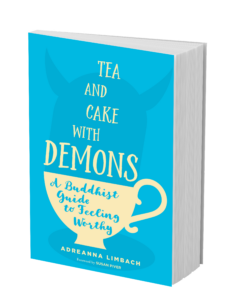
Buy your copy of Tea and Cake with Demons at your favorite bookseller!
Sounds True | Amazon | Barnes & Noble | Indiebound | Bookshop
Embracing vulnerability… with Brené Brown

Brené Brown
“You cannot access empathy if you’re not willing to be vulnerable.” What a rich and provocative statement from our friend and Sounds True author Brené Brown. There is such a deeply-rooted pull to move toward those emotional-states that we identify as “positive” or “light” or “spiritual” – along with a counter move away from those “darker” or challenging and exposing emotions such as vulnerability, sadness, and grief. But, as Brené reminds us, vulnerability is the ground of all of the so-called positive emotional states, including those of love, joy, and belonging.
When we can allow ourselves to be naked, exposed, to be profoundly touched by whatever appears, we can meet this life – and the sweet, beautiful heart of another – in the most precious way. It is in this turning into the immediacy of our experience, in a truly embodied way, that we come to discover the many fruits of this sacred world. There are times, of course, when doing so is not easy, when it takes everything we have (and more), and feels completely counter-instinctual. But somehow, by some mysterious grace, we learn to stay with what is there, knowing that it has something very precious to show us about ourselves, and about the true nature of love.
Enjoy the following video from Brené on the gifts of embracing vulnerability…
Let Love Have You – with Gangaji
Gangaji is an American-born spiritual teacher dedicated to sharing the path of freedom through simple and direct self-inquiry, as taught by the legendary sage Sri Ramana Maharshi of India. In 1990, Gangaji (then Antoinette Roberson Varner) entered this lineage through her living teacher Sri H.W.L. Poonjaji. Since that time, she has traveled the world, holding gatherings and retreats with spiritual seekers of all faiths. Gangaji is the author of The Diamond in Your Pocket and You Are That.
Here, Gangaji invites us to allow the force and energy of love to take over our lives, to live and express through us—opening us to a life of endless discovery and joy.
Meet the Author of Good Morning Yoga
The Author
Mariam Gates holds a master’s degree in education from Harvard University and is the creator of Kid Power Yoga. She is the author of the bestselling Good Night Yoga and many other yoga-related books for children. Mariam’s favorite yoga pose is Tree. She lives in Northern California. For more, see mariamgates.com.
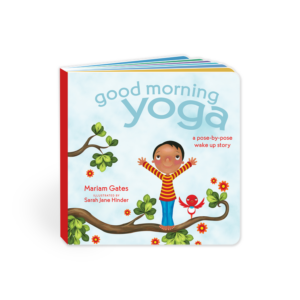
The Book
Good Morning Yoga is a board book version of the bestselling picture book. Targeted for the littlest yogis, ages 0–4, it is the perfect introduction to simple yoga poses at an early age, encouraging children to enjoy moving their bodies, using their imaginations, and learning a new skill.
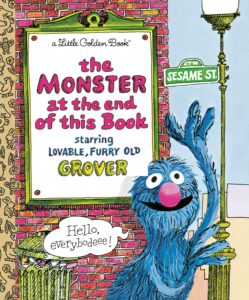
What was your favorite book as a child?
My absolute favorite book as a child was The Monster at the End of This Book by Jon Stone and illustrated by Michael Smollin. (Though on the cover, it really just gives credit to “lovable, furry old Grover.”)
It is the original “interactive” book. As a child, the fact that Grover was speaking directly to me, the reader, and that I was in on (and affecting) the progression of the story was nothing short of magical. It was my first experience of feeling amazed, surprised, and delighted by what could happen in the pages of a book—a feeling that has obviously never left.
All of my books are “interactive,” and my hope is that children feel that kind of connection and magic when they read them. I want young readers to be transported and to feel how each word and each image was created as a gift for them to enjoy.
Has your book taken on a new meaning in the world’s current circumstances? Is there anything you would have included in your book if you were writing it now?
I have loved hearing over the years about how teachers and parents incorporate Good Morning Yoga: A Pose-by-Pose Wake Up Story into morning meetings and family routines. But once we went into shelter-in-place in 2020, I started having daily and weekly emails and messages from people around the country. I’ve had the honor of hearing personal stories from teachers who are still using it, but now on Zoom, and parents who use the flow and the visualization at the end as transitions and breaks in their homeschooling schedules. In the midst of all of this separation, it has been an unbelievable gift to be connected to people through the book.
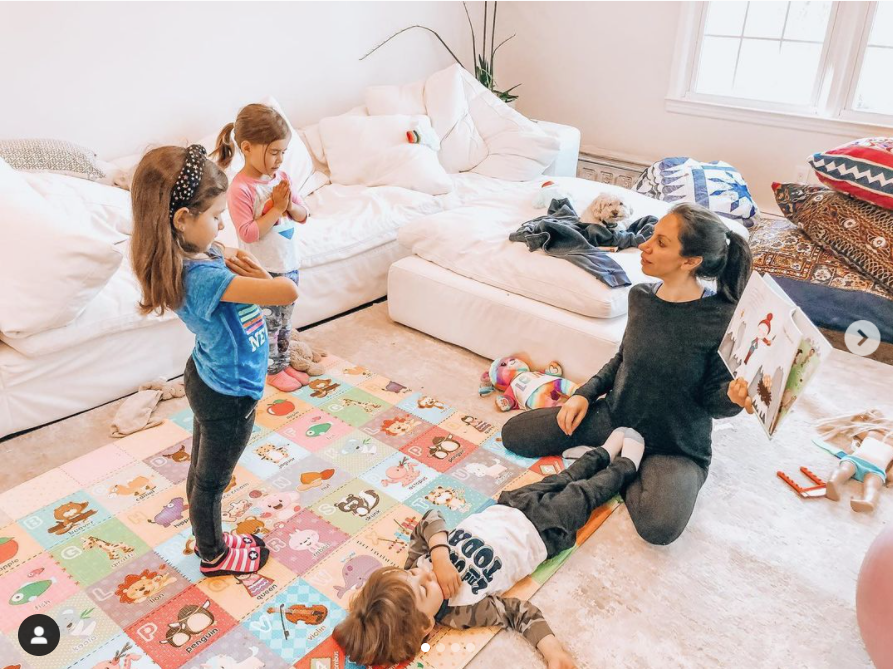
Photo courtesy of Misha Vayner
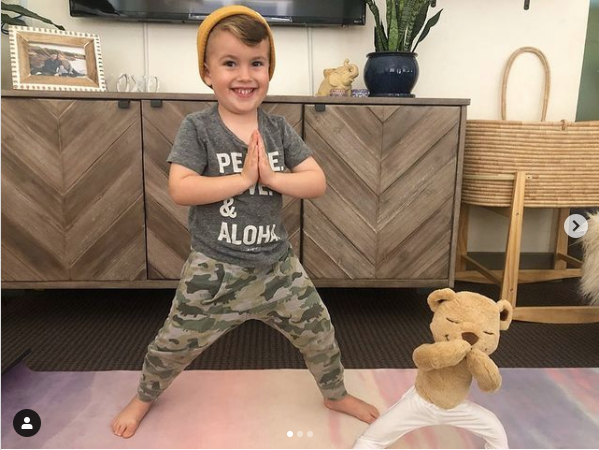
Photo courtesy of MOJA YOGA
What is something that doesn’t make it into your author bio?
In my 20s and 30s I was a hand model! It was an incredibly fun (and lucrative) job. I had always received compliments on my hands, so in graduate school, when I did not have time for a regular employment schedule, I started hand modeling on the side. 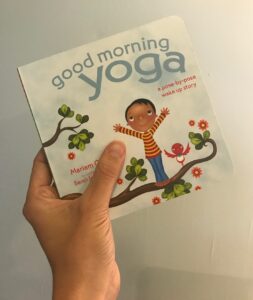
This was back when most things were done in person, so I made an appointment for an interview with Ford Modeling and brought in a set of “handshots.” They signed me on the spot, and I spent several years working in commercials and print.

Learn More
Sounds True | Amazon | Barnes & Noble | IndieBound | Bookshop


